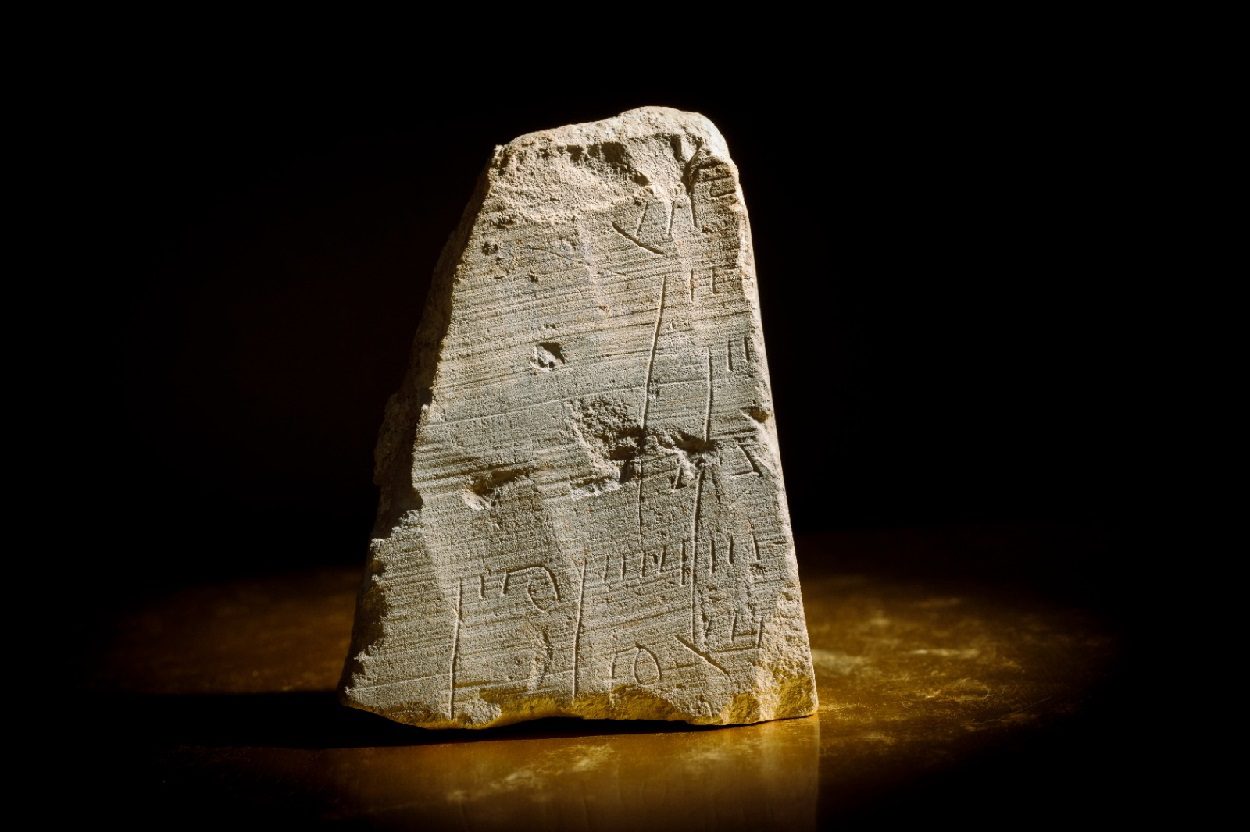Archaeologists conducting works on behalf of the Israel Antiquities Authority have uncovered a 2,000-year-old stone “receipt” during excavations in the Jerusalem Walls National Park, Israel.
The artefact has inscriptions written in Hebrew, showing partially preserved lines of fragmentary names with letters and numbers carved onto a chalkstone (qirton) slab. The slab was originally used as an ossuary (burial chest), which was discovered in a tunnel previously excavated during the 19th century by British archaeologists.
Although the slab was found outside of its original context, an analysis of the type of script and comparisons with contemporary examples suggests that it dates from the early Roman period or the late Second Temple period.
During antiquity, the find-site would have been located along the Pilgrimage Road, a major thoroughfare connecting the city gate all the way to the gates of the the Temple Mount and the Second Temple.
The partially preserved lines include fragmentary Hebrew names with letters and numbers written beside them. For example, one line includes the end of the name ‘Shimon’ followed by the Hebrew letter ‘mem’, and in the other lines are symbols representing numbers.
Some of the numbers are preceded by their economic value, also marked with the Hebrew letter ‘mem’, an abbreviation of ma’ot (Hebrew for ‘money’), or with the letter ‘resh’, an abbreviation of ‘reva’im’ (Hebrew for ‘quarters’).
According to the researchers, “the everyday life of the inhabitants of Jerusalem 2,000 years ago is expressed in this simple object. At first glance, the list of names and numbers may not seem exciting, but to think that, just like today, receipts were also used in the past for commercial purposes, and that such a receipt has reached us, is a rare and gratifying find that allows a glimpse into everyday life in the holy city of Jerusalem”.
Similar examples from the Roman period have been previously discovered in the Jerusalem and Bet Shemesh area, all with inscriptions marking names and numbers carved on stone slabs.
Header Image Credit : Eliyahu Yanai







